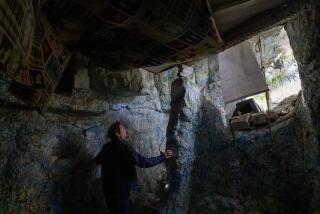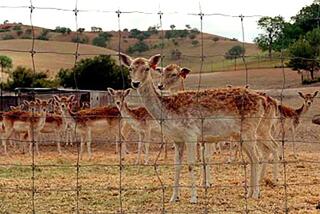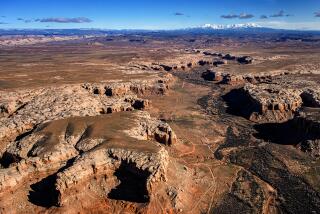Dot-Coms Chip in for Conservancy’s Prairie Expansion
- Share via
ENTERPRISE, Ore. — Helped by $5 million from the Internet community, the Nature Conservancy has bought a large chunk of a prairie ecosystem that once stretched across the Northwest.
The conservancy paid $11.7 million for the 27,000-acre Camp Creek Ranch, which represents almost 20% of the Zumwalt prairie.
The bunch grass prairie covers 146,000 acres overall--more than one-fifth the size of Rhode Island--and is home to one of the nation’s densest concentrations of nesting birds of prey.
The Nature Conservancy has known about the Zumwalt for 20 years but has not been able to raise the money to buy its pieces.
But the Internet Age changed all that.
The organization has been recruiting board members from the high-tech industry, and when the Camp Creek Ranch came up for sale, they turned to Mike Burmeister-Brown, a Yahoo engineer and president of Second Nature Software, which donates profits to the conservancy.
He made a pitch to Glen Boyd and Eli Shapira, founders of WebTrends, and the $5 million was secured.
The Zumwalt is what’s left of an ecosystem that once stretched across the northern tier of the Oregon desert, through Idaho and eastern Washington and north into Montana and Canada. The remnants are mostly scraps between irrigated farmland and along roads.
The diversity of the prairie has been replaced by the monoculture of a pasture, with fewer insects, small mammals and other species.
Heavy grazing has allowed cheat grass to move in, reducing the nutritional value for elk and deer as well as cattle. Young aspen trees have been eaten to the ground, threatening nesting habitat for hawks. The crust of lichens and mosses that hold moisture in the soil is broken.
“As we enter a new century, there are not many chances left to preserve unbroken ecosystems,” said Russ Hoeflich, the conservancy’s Oregon director.
More to Read
Inside the business of entertainment
The Wide Shot brings you news, analysis and insights on everything from streaming wars to production — and what it all means for the future.
You may occasionally receive promotional content from the Los Angeles Times.









